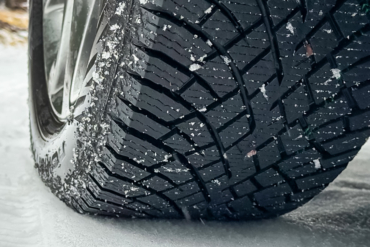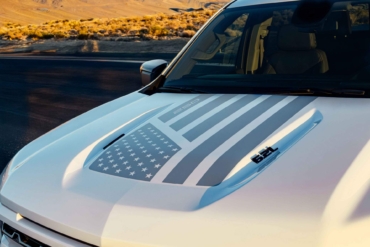Using NASA know-how, Orbis Brakes has come up with a new rotor design that could slash emissions while cutting braking distances at the same time.
Can a company reinvent the disc brake? That’s what California-based Orbis Brakes is claiming. The company says that its new Periodic Wave design rotor was developed with help from NASA and that it lets your vehicle’s brakes shed heat more quickly while also reducing pad wear, fade, and hazardous brake dust.
Disc Brakes Unchanged in Decades

The disc brake, as found on nearly every new car or truck built in the last 60 years, hasn’t changed much since its invention. As seen in the photo above, it is a disc-shaped hunk of iron or steel that’s grabbed by a caliper squeezing a friction material against it.
Even carbon ceramic brakes, as found on some seriously expensive supercars and performance EVs like the Tesla Model S Plaid aren’t really new. They just swapped a carbon ceramic material in place of iron or steel, and it was first found on aircraft in the 1960s and in a Brabham Formula 1 car in 1979. They’ve been on road cars since 2001.
What Does Orbis Do Differently?

A traditional front brake disc or rotor has a vented center section. Look inward at the rotor from the edge and you’ll see cavities. With vanes holding the two thick rotor faces apart.
These cavities and vanes run from the rotor’s hub section to the outside. They are designed very carefully to ensure that air flows in through the center and out at the perimeter of the rotor. It’s that airflow that keeps the brake pads and rotors from overheating in hard use.
The method works well enough in most cases, but not all. This is why race cars and supercars use higher-temperature carbon-ceramic materials as well as large ducts to help vent the brakes and keep temperatures in check.
Periodic Wave Allows External Vent

Instead of internal venting, Orbis uses a solid rotor with a “Periodic Wave” pattern around the inner and outer edges of the disc.
Orbis says the design comes from “a unique multi-year collaboration with NASA,” borrowing the space agency’s experience and expertise in heat disbursement.
The wave pattern on the rotor allows it to shed heat while spinning from the outside instead of the inside. Orbis says this cools the brakes twice as fast as conventional disc brakes. Doing so reduces pad wear, brake dust, and potentially dangerous brake fade.
Benefits Include 50% Less Weight

According to Orbis, the design has multiple benefits for the environment. The first is requiring 50% less iron than conventional brakes.
Less material also reduces the weight of the vehicle — especially rotating weight, which adds to the amount of energy required to move and stop a vehicle, much more than fixed weight.
The lower temperatures are also said to significantly reduce the particulate emissions left by brake pads and even tires. These particulates have long been ignored, but have been brought to the forefront of emissions issues in recent years. The next generation of European vehicle emissions standards will include brake pad particulate limits for the first time.
First Production Option Expected This Year
Orbis expects its first-generation NextWave rotor to be available starting later this year. It is a multipiece rotor design — with a separate center “hat” and disc surface — meant to replace existing conventional rotors with less weight and more performance.
Next up is EcoWave, using the same design but meant to compete with entry-level brake options. This is expected in 2023.
LightWave, which replaces the rotor, caliper, and pads with a new high-performance design is also expected next year. The final Orbis design is CarbonWave, which integrates the brake rotor into the wheel instead of attaching it to the hub. Orbis says this will offer the lowest unsprung weight in the industry.
The company is taking preorders for its replacement rotors. The target is anyone looking to improve braking performance, but Orbis is paying particular attention to performance EVs where increased range could be a benefit along with improved stopping.
And yes, even EVs need a hydraulic braking system, because while regenerative brakes are impressively capable, they can’t function in all conditions and they can’t handle emergency stops. Oh, EVs are also very heavy, which means they need high-quality, powerful brakes.








